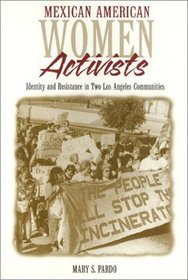Search -
Mexican American Women Activists: Identity and Resistance in Two Los Angeles Neighborhoods
Mexican American Women Activists Identity and Resistance in Two Los Angeles Neighborhoods
Author:
When we see children playing in a supervised playground or hear about a school being renovated, we seldom wonder about who mobilized the community resources to rebuild the school or staff the park. Mexican American Women Activists tells the stories of Mexican American women from two Los Angeles neighborhoods and how they transformed the everyday... more »
Author:
When we see children playing in a supervised playground or hear about a school being renovated, we seldom wonder about who mobilized the community resources to rebuild the school or staff the park. Mexican American Women Activists tells the stories of Mexican American women from two Los Angeles neighborhoods and how they transformed the everyday... more »
ISBN-13: 9781566395724
ISBN-10: 1566395720
Publication Date: 7/1998
Pages: 322
Rating: ?
ISBN-10: 1566395720
Publication Date: 7/1998
Pages: 322
Rating: ?
0 stars, based on 0 rating
Publisher: Temple University Press
Book Type: Hardcover
Members Wishing: 1
Reviews: Amazon | Write a Review
Book Type: Hardcover
Members Wishing: 1
Reviews: Amazon | Write a Review
Genres:
- Nonfiction >> Politics >> General
- Nonfiction >> Social Sciences >> Sociology >> General
- Nonfiction >> Social Sciences >> Sociology >> Urban
- Nonfiction >> Social Sciences >> Specific Demographics >> General
- Nonfiction >> Women's Studies >> General




